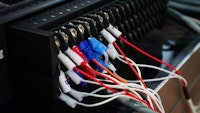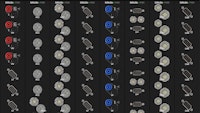Table of contents
Browse categories
Browse authors
 AB
ABAlberto Boffi
 AL
ALAlessia Longo
 AH
AHAl Hoge
 AB
ABAljaž Blažun
 BJ
BJBernard Jerman
 BČ
BČBojan Čontala
 CF
CFCarsten Frederiksen
 CS
CSCarsten Stjernfelt
 DC
DCDaniel Colmenares
 DF
DFDino Florjančič
 EB
EBEmanuele Burgognoni
 EK
EKEva Kalšek
 FB
FBFranck Beranger
 GR
GRGabriele Ribichini
Glacier Chen
 GS
GSGrant Maloy Smith
 HB
HBHelmut Behmüller
 IB
IBIza Burnik
 JO
JOJaka Ogorevc
 JR
JRJake Rosenthal
 JS
JSJernej Sirk
 JM
JMJohn Miller
 KM
KMKarla Yera Morales
 KD
KDKayla Day
 KS
KSKonrad Schweiger
Leslie Wang
 LS
LSLoïc Siret
 LJ
LJLuka Jerman
 MB
MBMarco Behmer
 MR
MRMarco Ribichini
 ML
MLMatic Lebar
 MS
MSMatjaž Strniša
 ME
MEMatthew Engquist
 ME
MEMichael Elmerick
 NP
NPNicolas Phan
 OM
OMOwen Maginity
 PF
PFPatrick Fu
 PR
PRPrimož Rome
 RM
RMRok Mesar
 RS
RSRupert Schwarz
 SA
SASamuele Ardizio
 SK
SKSimon Kodrič
 SG
SGSøren Linnet Gjelstrup
 TH
THThorsten Hartleb
 TV
TVTirin Varghese
 UK
UKUrban Kuhar
Valentino Pagliara
 VS
VSVid Selič
 WK
WKWill Kooiker
The Difference Between Data Logger and Data Acquisition (DAQ) System?

September 30, 2025
In this article, we will learn the difference between a Data Logger and a Data Acquisition (DAQ) System, describing this with enough detail that you will:
See what the major differences are
Learn when a data logger or DAQ system should be used, and why
Understand the major applications for each of these instrument types
Are you ready to get started? Let’s go!
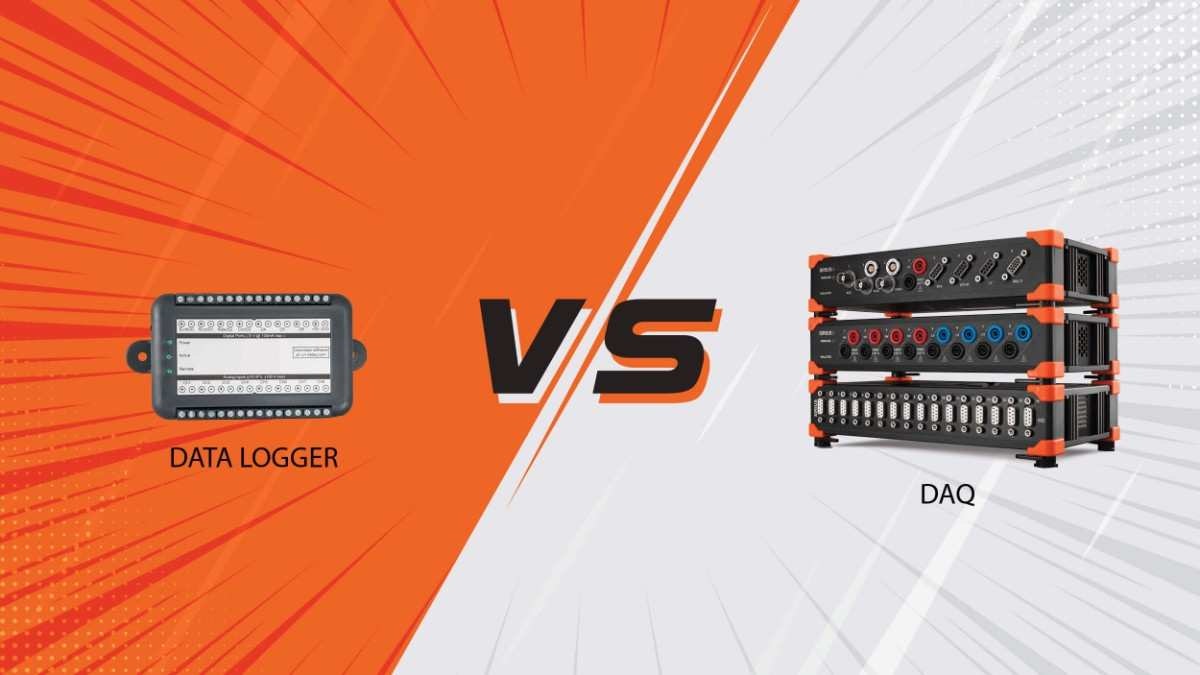
Looking from high above, it would seem that data acquisition (DAQ) systems and data loggers were the same things. They both have signal conditioning circuitry. They both have one or more analog inputs, and convert those analog signals to digital data and store that data. They both have the essential DAQ hardware that allows them to cover the general purpose and specialized data acquisition applications.
Of course from that perspective, a child’s toy car and a Tesla would appear to be similar, as well. They both have four wheels and they are both intended to transport a passenger from one place to another.
But a child’s toy and a modern electric car are really not the same things, are they? So we need to look closer to see the real distinctions between these two very different machines. When we compare data loggers with DAQ systems, it’s both a question of capability and of application.
So let’s take a look first at their relative capabilities, and then at their most common applications.
What is a DAQ system?
DAQ systems are made for both dynamic and static measurements, therefore they are capable of both high-speed and low-speed sampling. DAQ systems usually have a high-powered computer either built-in or connected to them, and offer highly capable signal conditioning, allowing a wide variety of sensors to be connected to them.
Check out Dewesoft's modern, digital data acquisition systems with extensive data logging capabilities
DAQ systems are normally used for short-duration tests, from seconds to hours. They are analogous to benchtop oscilloscopes in the sense that they are used for a variety of applications every day.
Learn more about data acquisition:
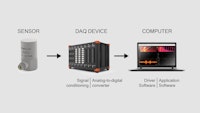
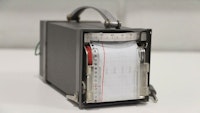
What is a data logger?
Data Loggers, on the other hand, are typically designed to measure relatively slow signals but for a much longer period of time, usually measured in days, weeks, or even months. They are installed in a fixed location where they work for these extended periods, writing data to internal RAM or a removable memory device.
A data logging system consists of a limited set of inputs, such as voltage, current, temperature, and perhaps one other type of signal. So while a data logger is literally a “DAQ device” (aka “data acquisition device”), it cannot be properly classified as a DAQ system.
Learn more about data loggers:
Capability comparison
Referring to the table below, you will see that there are numerous distinctions between data loggers and DAQ systems. After the table, we will examine each of these criteria in more detail.
| / | Data Logger | DAQ System |
|---|---|---|
| Sample Rates | Very low to medium | Very high |
| Input Types | Limited to a few core types | A very broad range of types |
| Channel Count | 4-32 is common. 50-100+ available. | Usually 8 to 16; 32-100+ available |
| Data Storage | Internal NVRAM | Internal SSD |
| Recording Times | Long | Short to Medium |
| User Interface | Usually either none or rudimentary numerical display. | Very robust, with an extensive graphical user interface |
| Real-time Monitoring | Some provide this | All provide this |
| Power System | Usually battery-powered | Usually, externally AC/DC powered |
| Cost | Very low | Mid to high |
Sample rates comparison
Data loggers are made for largely slow signals, i.e., temperatures and conditions that change slowly over a long period of time. Some data loggers are made to monitor for glitches and short circuits, which may not occur for days, weeks, or months. Common top sample rates are 1 S/s up to 100 S/s per channel. This is why, with relatively little onboard storage space, they can record for such long periods of time.
In contrast, DAQ systems are relatively short-duration tests of minutes or perhaps hours in duration. They are always much faster in terms of their sample rates than data loggers.
Typical maximum sample rates for DAQ systems are 100 kS/s, 200 kS/s, and even 1 MS/s per channel. This is orders of magnitude faster than data loggers, so they store a lot more data even in a shorter test. And because of this speed, DAQ systems are capable of dynamic testing applications such as shock and vibration, acceleration studies, and more.
Check out Dewesoft's modern, digital data acquisition systems which offers the sampling rate of up to 1 MS/s/channel
In some systems, such as those DAQ systems made by Dewesoft, it is possible to sample some channels very fast while simultaneously sampling other channels very slowly, and still have all channels synchronized.
Imagine a test involving both high-speed recordings from dynamic sensors like accelerometers, but where we also need to monitor the temperature at half a dozen locations. We need to sample the accelerometers at 50 kHz, but there is really no reason to sample the temperatures at more than 10 Hz.
However, most DAQ systems do not allow different sample rates so they are forced to sample the temperature sensors at 50 kHz, resulting in an unnecessarily large data file. Dewesoft systems solve this problem by allowing any channel’s sample rate to be a divisor of the dynamic rate - and further, allow the test operator to choose how the reduction is done, i.e., min/max, average, max, or min values.
Input types comparison
The signal conditioning built into data loggers is rudimentary compared to high-end DAQ systems. Frankly, they do not require the breadth of capabilities of DAQ systems in order to perform their essential functions.
They are left for weeks or months to record the same signals over and over again. With few exceptions, these are limited to volts, 4-20 mA current, temperature, humidity, and pulse signals. They often use screw terminal-type connectors because they are left in place for months or years at a time, and the signal connections, therefore, do not change very often.
Learn more about signal conditioning:
On the other hand, most DAQ systems have flexible input module configurations allowing them to be adopted by the user to handle a wider range of input types like:
voltage,
current,
pressure,
strain,
stress,
shock,
vibration,
temperature, and
digital signals from RPM sensors, encoders, and
more.
Their input connectors are normally quickly connected types such as banana jacks, BNCs, and LEMO connectors because they are used for different applications all the time.
DAQ systems are often employed much like a laboratory oscilloscope in the sense that they are used for a wide variety of applications and purposes every day, as opposed to the fixed applications of most data loggers.
So while data loggers and data acquisition systems essentially record the same type of data, DAQ systems provide a much broader range of overall capabilities.
Channel count comparison
Data loggers provide anywhere from four to 32 input channels. A few models offer more, up to 100 channels or more. Relatively few data logger applications require a large channel count.
Although DAQ systems are also available from a few channels into the hundreds, most of them offer between 8 and 16 channels. This is because the signal conditioners are more robust, hence expensive, and the same rates are much higher in these instruments, which can handle both dynamic and static / quasi-static signals.
The advent of single-channel DAQ systems
There are single-channel DAQ modules available today, such as the EtherCat connected KRYPTON ONE DAQ modules offered by Dewesoft. These single-channel DAQ modules can be distributed far and wide, but be controlled from a computer located at one location.
KRYPTON ONE series DAQ modules can be interconnected up to 100 m (328 feet) apart. A single EtherCat cable interconnects them. Modules are available for accelerometers, strain gauges, high and low voltages, current, digital input, digital output, thermocouples, and more. They provide IP67 protection against high and low-temperature environments, water, dust, dirt, shock and vibration, and more.
Data storage comparison
Data loggers normally store recorded data in their internal non-volatile memory, which is later downloaded to an external computer for analysis. This memory is often measured in kilobytes or megabytes (some data loggers do allow USB flash media to be used, which means that GB storage is possible in those systems). This is because of the low sample rates of data loggers: even if you’re recording 100 channels at 1 S/s with 16-bit resolution (requires 2 bytes per sample), that’s only
DAQ systems normally store their data on solid-state drives that provide GB (gigabytes) or even TB (terabytes) of storage. Compare the 720,000 samples per hour of the data logger example above to a common DAQ system recording 8 channels at 100 kS/s at 24-bit resolution:
There is a very big difference between 720,000 samples in an hour versus 11.52 BILLION samples in an hour.
Analysis can often be done on-board, or the data can be offloaded to external systems for long-term storage and analysis.
Recording time comparison
As shown in the previous comparison, data loggers record slowly to a relatively small amount of NVRAM, while DAQ systems record very fast to a vastly larger storage device such as a solid-state (SSD) or standard hard drive (HDD).
Data loggers range from recording times measured in days, to those which can be measured in weeks or months. DAQ systems, because of their GB and even TB SSD storage capacities, even despite their much higher sample rates, can also store for days, weeks, and possibly months.
User interface comparison
Data loggers normally provide either no interface at all or a rudimentary numerical display. Because they are sitting there recording for weeks or months at a time, no one is going to be standing there looking at them as they would do with a short, high-speed test using a DAQ system.
Some data loggers are equipped with a web or HTTP interface, so connecting to them via ethernet and calling up their IP address in a web browser will allow the user to monitor their values in quasi-real-time.
Because of how they are used, DAQ systems usually provide a very robust, extensive graphical user interface, rich with graphical elements like moving charts, bar graphs, rapidly updating numbers, and more. Bellow's video shows the vast capability of a modern Dewesoft X data acquisition software UI and offers advanced data visualization and customization capabilities.
Most data loggers offer drivers for programming environments such as DASYLab® and LabVIEW® - software programming suites offered by National Instruments, to name one. Using these tools engineers can create their own software interface for the data logger hardware. Some DAQ companies provide similar drivers for these programming tools, although they are more likely to include their own turn-key software applications.
Real-time monitoring comparison
Some data loggers provide real-time monitoring capability in the form of a built-in LCD display that shows the numerical values being measured in real-time. Others may provide a wired or WIFI interface whereby another computer may access the data in real time. If a data logger does not provide this, it is often necessary to wait until the test is stopped before the data can be accessed via an external computer.
On the other hand, all DAQ systems provide some kind of display for monitoring the data in real-time. Stand-alone DAQ systems typically have a high-resolution computer display, while DAQ systems that are tethered to a computer for storage and processing via USB or Ethernet, run their software on that computer, whose display is utilized for real-time monitoring as well as post-recording data review, analysis, and report generation.
Nearly all DAQ systems provide a rich GUI experience during recording. And after recording, the data can be replayed, analyzed, printed, and exported to other systems if desired.
After testing, data is typically offloaded to an external computer for analysis. Some loggers allow real-time monitoring via wired or wireless connection.
Power system comparison
The typical data logger is a battery-powered, low-power electronic device. Because of their low power draw, many of them can operate for hours without any external power. However, those which must record for extended periods of time must be externally powered.
Due to their high processing load and high-speed operation, most DAQ systems require external AC or DC power. Some offer battery-power systems for 2-3 hours of operation.
Cost and pricing comparison
There is no doubt that data loggers are less expensive than DAQ systems. A low-end data logger may cost as little as $100 USD. Mid-range data loggers vary in price from $500 to $3000 USD.
On the other hand, DAQ systems are always in the thousands of dollars, from $4000 for a tethered USB system to $30k USD or more for a higher-end stand-alone system.
Application comparison
Common data logger applications
Monitoring temperature and humidity levels in manufacturing environments, storage facilities, hospitals, and other public facilities
Monitor food temperature at all stages of processing and transportation
Monitor HVAC conditions in industrial and commercial facilities
Monitor growing conditions in greenhouses and on farms
Monitor the environmental conditions for pharmaceuticals during manufacturing and storage.
Common DAQ system applications
Automotive - brake testing, pass-by noise testing, combustion analysis, airbag tests, dynamo and road load tests, strain gage tests, hybrid/electric engine development, cold and hot weather testing
Acoustics and NVH - noise studies, shock, and vibration analysis
Military - ballistics testing, strain gage tests
Aerospace - actuators, jet engines, rocket engines, hydraulics, control systems, aerospace telemetry recording
Industry - factory process monitoring and test, robotics development
And thousands more
Summary
So you can see that the applications for data loggers and DAQ systems are quite distinct from each other.
While DAQ systems are more like a race car, made to go very fast for a relatively short period of time, data loggers are intended to record slower but for longer durations. The application is what should drive your choice of instrument.
Check out Dewesoft's modern, digital data acquisition systems
If you’re making long-term measurements that extend over days, weeks, and months, a data logger is usually better suited and certainly more economical than a DAQ system. But if you need to make dynamic measurements or records from a very wide range of sensors and signal types, a DAQ system is the only choice.
